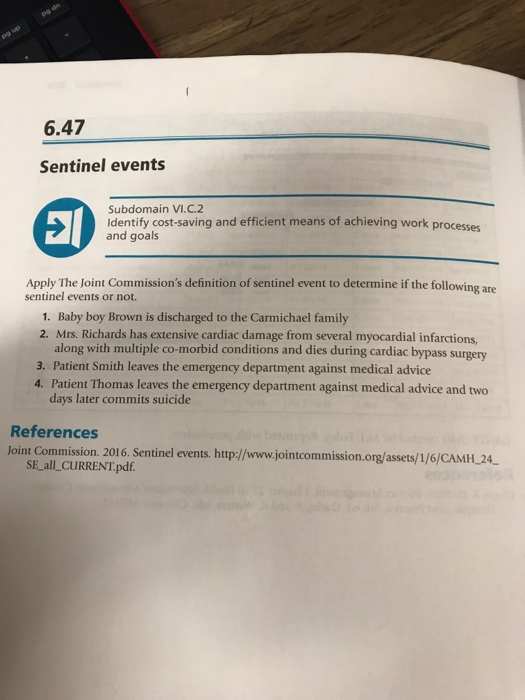
Sentinel events software#
More Tools for Reducing ErrorsĪmong the available tools for hospitals, bidirectional software breaks down the communication barriers between all health care professionals treating a patient in the continuum of care. Additionally, utilizing “do not use” abbreviation lists and medication reconciliation tools can avoid omissions, duplications, dosing errors, or drug interactions. All practitioners – from medics to nurses to physicians – can enter notes directly into a single electronic patient record, rather than handing off handwritten notes that must be later entered by another person. For example, reducing paper records in favor of easily transferrable electronic patient care records (ePCRs) can cut down on data entry errors or lost documentation. However, The Joint Commission also states that at least a quarter of medication-related injuries are preventable, primarily through better communication procedures and technologies. Fortunately, most do not cause serious harm, but those that do can be expensive: each preventable adverse drug event (ADE) costs a hospital approximately $8,750.

On average, according to The Joint Commission, a hospitalized patient is subject to at least one medication error per day (though error rates vary widely among hospitals). and kill thousands, with an annual cost of at least $3.5 billion. Better Communication and Technology to Report and AddressĪccording to the Institute of Medicine (IOM), medication errors harm 1.5 million people yearly in the U.S. You can take the damage from a sentinel event and bring some good out of the situation by making improvements and increasing awareness of similar risks across the industry. Voluntary reporting can not only improve operations in your hospital but bring to light potential similar situations for your peers as well. While it might feel natural to want to downplay or keep quiet on the event, in the long run, it benefits more people to address the situation directly and honestly. Follow The Joint Commission’s reporting and root-cause analysis requirements, detailed in the organization’s accreditation manual.Sentinel events have many victims, so a comprehensive support system of services is essential. Provide support for patients, family members, and staff.Disclose situationally relevant information to the patient or his or her designated caregiver as soon as possible.You may choose to take photos of the scene of the sentinel event to aid in downstream analysis. Preserve anything that might be helpful in the analysis process, including equipment, medication, and more.Ensure the immediate safety and wellbeing of anyone directly involved, including patients and staff. Secure the situation, first and foremost.If you find yourself facing a sentinel event in your hospital, The Joint Commission offers a 5-step process of what to do next. 46% of sentinel events led to a patient’s death.However, reviewing the data from 1995 to present, some trends in the serious impact of sentinel events can be identified. The Joint Commission points out that less than 2% of all sentinel events are actually reported, so this data set should be with that caveat. Unintended retention of a foreign object (97 incidents).The Top 10 most frequently reported sentinel events in 2021 include: The remaining 129 sentinel events were reported either by patients (or their families) or employees (current or former) of the organization. According to the accrediting body, 89% of these incidents were self-reported voluntarily by an accredited or certified entity. In 2021, The Joint Commission received 1,197 reports of sentinel events, a 48% increase over 2020. The organization recently reported that 2021 included the highest annual levels seen since. The Joint Commission, the nation’s oldest and largest standards-setting and accrediting body in health care, first started tracking sentinel events in 2007. Serious patient safety incidents unfortunately appear to be on the rise today in hospitals.

These events are called “sentinel” events, so called because they signal a need for immediate investigation or response.

The worst-case scenarios are when a patient is seriously injured (permanently or temporarily) or even killed. Note: This blog was updated in July 2022 with more current data on number and types of sentinel events.Įven in the top-functioning, best-maintained hospital facilities, medical errors can happen.


 0 kommentar(er)
0 kommentar(er)
